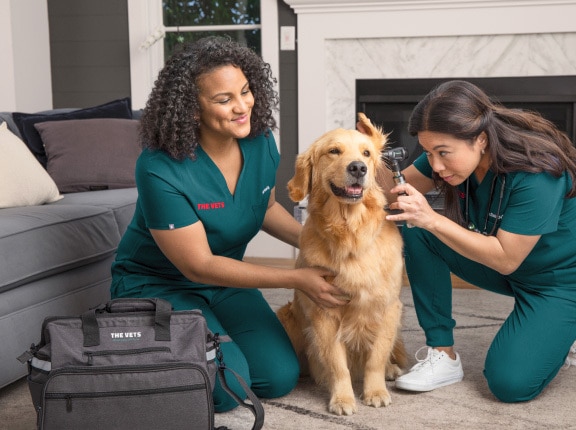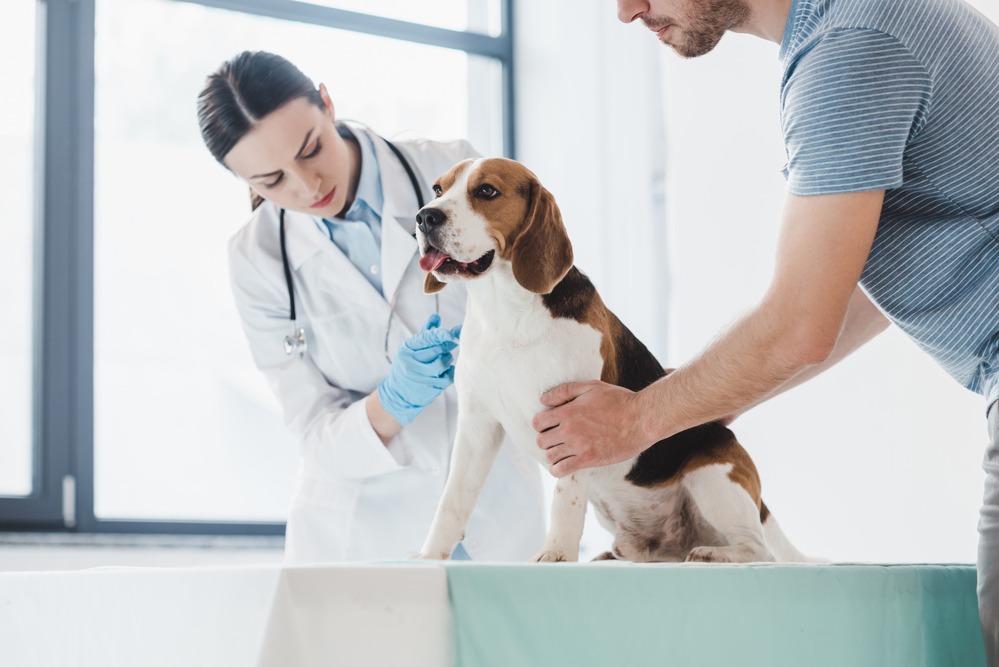What Happens During a Visit to an emergency vet? Step-by-Step Walkthrough
What Happens During a Visit to an emergency vet? Step-by-Step Walkthrough
Blog Article
All About Vet Surgical Procedure: Recognizing the Relevance of Specialist Treatment for Your Animals
Vet surgical procedure is an essential part of animal healthcare. It incorporates various procedures, from regular optional surgeries to urgent interventions. Understanding the complexities of these surgical procedures can assist pet proprietors make educated choices. The preparation, execution, and recovery phases are essential for making certain the health of animals. With appropriate expertise, owners can browse the intricacies of vet treatment. What factors should be considered prior to a family pet goes through surgical procedure?
Types of Veterinarian Surgeries
When a pet dog calls for surgical treatment, comprehending the various kinds of veterinarian surgical procedures can aid family pet proprietors make notified decisions. Vet surgeries can be broadly classified right into three primary kinds: elective, immediate, and emergency situation surgical treatments. Elective surgical procedures, such as spaying or neutering, are planned treatments that are not immediately lethal. Urgent surgical treatments, like those for international body removal, should be done quickly yet are not dangerous in the moment. Emergency situation surgical procedures, such as those dealing with serious injury or internal bleeding, are essential and call for prompt attention.Additionally, surgical treatments can vary in complexity, ranging from minimally invasive laparoscopic treatments to much more comprehensive open surgical treatments. Each kind of surgical treatment lugs its own risks and healing procedures. Understanding these classifications enables pet proprietors to involve in meaningful conversations with veterinarians, causing much better end results for their beloved pets.
Getting ready for Your Animal's Surgical treatment
Getting ready for a pet dog's surgical treatment includes an extensive list to ensure all essentials are covered. Effective interaction with the veterinarian is essential for comprehending the procedure and any essential pre-operative actions - veterinary cardiologist near me. In addition, having clear post-operative care directions will certainly aid proprietors supply the very best assistance for their recovering pets
Pre-Surgery Checklist Fundamentals
Ensuring a smooth medical experience for a pet requires cautious prep work and interest to information. A pre-surgery checklist is important for pet dog owners to adhere to. Confirming the arranged surgical treatment day and time is vital. Owners need to likewise confirm that their family pet has actually fasted according to the vet's directions, typically for 8-12 hours prior to surgical procedure. Gathering required medical documents, including vaccination history, is necessary for the veterinarian's evaluation. It is also advisable to prepare a comfy room at home for the animal's healing after surgery. Owners ought to have a strategy for transport to and from the veterinary center, making sure that the family pet is safe and secure and comfy throughout the trip. Following these steps can considerably boost the surgical experience.
Communicating With Your Vet

Effective interaction with the vet is important for a successful surgical experience for pet dogs. Owners ought to be prepared to review their family pet's clinical history, consisting of any type of pre-existing problems, medicines, and allergies. This info assists the vet evaluate dangers and customize the medical plan as necessary. Additionally, pet dog owners need to ask questions regarding the procedure, anesthesia, and expected outcomes to assure they fully understand the procedure. Clearing up any doubts can alleviate anxiousness for both the animal and the proprietor. It is likewise crucial to communicate any behavior modifications or issues observed in the pet leading up to the surgical treatment. Inevitably, clear dialogue promotes trust and collaboration, guaranteeing that animals receive the most effective feasible treatment during their medical trip.
Post-Operative Care Directions
After talking about the operation with the veterinarian, pet dog owners ought to concentrate on post-operative treatment instructions to promote a smooth recuperation for their animals. These instructions usually include monitoring the surgical site for indications of infection, such as soreness or discharge. Pet dogs may need to be kept calm and constrained to stop excessive motion that could interfere with recovery. Discomfort administration is vital, so proprietors need to adhere to the vet's assistance on administering medications. Additionally, dietary restrictions might be encouraged to stay clear of stomach upset. Regular follow-up consultations are very important to ensure proper healing and deal with any type of problems. By adhering to these post-operative care guidelines, family pet owners can significantly contribute to their pet's recuperation and total well-being.
The Surgery Explained
The surgical procedure for animals includes important actions that ensure their safety and recovery. Pre-surgery preparations are vital for decreasing risks, while post-operative treatment standards play a vital function in advertising healing. Understanding these components aids animal proprietors navigate the surgical experience better.
Pre-Surgery Preparations
Before an animal goes through surgery, several essential prep work should occur to ensure a risk-free and successful procedure. An extensive vet evaluation is essential to analyze the family pet's general wellness and recognize any type of potential threats. This may include blood examinations, imaging, or various other diagnostics. The vet will certainly also discuss anesthesia alternatives customized to the pet's specific needs. In addition, pet owners are usually instructed to keep food and water for a specified time before surgical procedure to lessen the risk of difficulties throughout anesthetic. It is essential for owners to provide a full case history, including any type of medicines or allergies, guaranteeing the surgical team has all necessary details. Appropriate communication and adherence to pre-surgery guidelines can considerably enhance the outcome of the procedure.
Post-Operative Treatment Standards
Correct post-operative treatment is crucial for making sure a pet dog's recuperation following surgical procedure. After the treatment, pet dogs ought to be monitored closely for any indicators of complications, such as too much bleeding, swelling, or uncommon habits. It is very important to follow the veterinarian's directions regarding medicines, consisting of pain relievers and antibiotics. Pets ought to be kept in a silent, comfy atmosphere to minimize anxiety and promote recovery. Limiting task is important; short, leashed strolls might be essential, however jumping or running must be stayed clear of. Regular follow-up appointments ought to be arranged to analyze the recovery procedure. Additionally, the surgical site must be maintained tidy and dry, with any type of signs of infection reported to a vet without delay. Complying with these standards boosts healing end results.
Anesthetic and Discomfort Monitoring
Reliable anesthetic and discomfort management are crucial parts of vet surgery, ensuring that animals remain comfortable and safe throughout the treatment. Vets analyze each family pet's individual needs, taking into consideration aspects such as age, weight, health and wellness status, and the sort of surgical treatment being performed.Anesthesia protocols generally include a mix of pre-anesthetic drugs, induction representatives, and inhalant anesthetics, enabling precise control over the pet's level of consciousness. Monitoring during surgery is critical; veterinarians constantly observe important indicators to deal with any type of possible problems promptly.Pain management techniques may entail opioids, non-steroidal anti-inflammatory medications (NSAIDs), and anesthetics, tailored to the family pet's specific circumstance. This multifaceted technique helps lessen pain and promotes a smoother medical experience. By prioritizing efficient anesthetic and pain monitoring, vet professionals enhance the overall welfare of pets undergoing medical treatments, ensuring they obtain the highest possible requirement of care.
Post-Operative Treatment and Recuperation
Complying with surgical procedure, the focus shifts to post-operative treatment and healing, which is crucial for guaranteeing a pet dog's safe go back to typical tasks. Throughout this duration, family pets call for a peaceful, comfortable setting to aid recovery. Owners must very closely check their pets for any type of indicators of pain or unusual behavior.Veterinary standards usually consist of details directions associated with medication management, injury treatment, and nutritional adjustments. It is important to comply with these suggestions to lessen problems and promote healing. Pet dogs may require to be restricted from vigorous activities, such as running or jumping, during their healing period (24 hour vet bellingham).Regular follow-up appointments with the vet allow for monitoring of the animal's progress and timely changes to the care strategy. Offering psychological assistance and companionship can likewise boost a pet's recuperation experience, helping to alleviate anxiety and anxiousness. On the whole, attentive post-operative care plays a substantial function in accomplishing a successful recovery
Recognizing Difficulties After Surgical Procedure
How can pet owners recognize problems after surgical treatment? Understanding of certain indications is necessary for ensuring the wellness of pet dogs throughout recuperation. Typical signs consist of too much swelling, inflammation, or discharge at the surgical site, which may indicate infection. In addition, persistent pain, suggested by yawping or unwillingness to relocate, need to trigger instant attention. Adjustments in appetite or water consumption can likewise indicate problems; a decline in these actions may signal pain or distress.Moreover, family pet owners should check their family pets for any uncommon habits, such as sleepiness or problem breathing, as these can be indicators of significant concerns. Vomiting or looseness of the bowels complying with surgical procedure may call for immediate veterinary evaluation. Identifying these issues early can significantly influence a pet dog's healing process, emphasizing the relevance of alertness and punctual interaction with a veterinarian for any concerning signs and symptoms.
The Role of Veterinary Professionals in Surgical Care
Veterinary experts play a crucial duty in guaranteeing the security and success of operations for family pets, particularly following surgical procedure when monitoring and care are vital. These professionals include veterinarians, veterinary service technicians, and support team, all of whom add specialized abilities to the surgical process.Before surgical treatment, veterinarians perform comprehensive assessments to analyze the pet's wellness, making certain that any kind of underlying conditions are taken care of. Throughout the treatment, the medical team gives anesthetic, keeps sterile settings, and checks vital indications, very important for decreasing risks.Post-operative care is just as significant; vet professionals observe for issues, take care of pain, and guide proprietors on healing practices. Their expertise enables them to identify very early indicators of distress or infection, making certain timely intervention. Inevitably, the joint efforts of veterinary professionals in surgical treatment cultivate a secure atmosphere, advertising the health of animals throughout the medical journey.

Frequently Asked Questions
How Do I Select the Right Vet Doctor for My Family pet?
Picking the best veterinary surgeon includes researching qualifications, reading reviews, and assessing the clinic's setting. It is necessary to mirror on the doctor's experience with certain treatments and their interaction style when making a choice.
What Prevail Misconceptions About Vet Surgeries?
Common misconceptions concerning veterinarian surgical treatments include ideas that they are constantly risky, unneeded, or only for emergency situations. Many animal proprietors undervalue the advantages of precautionary treatments and the skill involved in veterinary surgical treatment.
How Much Will My Pet's Surgical procedure Cost?
The expense of a pet dog's surgical read more treatment can differ significantly based on elements such as the sort of treatment, the veterinarian's experience, and geographic place (animal emergency care bellingham). Generally, expenditures vary from a few hundred to several thousand bucks

Can My Family Pet Consume Before Surgical Treatment?
Prior to surgical procedure, it is generally encouraged that pets refrain from consuming for a particular period. This fasting helps reduce the risk of issues throughout anesthesia. Proprietors ought to consult their veterinarian for precise instructions tailored to their family pet's demands.
What happens if My Animal Has Pre-Existing Health And Wellness Conditions?
When a family pet has pre-existing health conditions, it's crucial for the veterinarian to evaluate these variables before surgical treatment. This examination assurances proper precautions are taken, reducing dangers and enhancing the pet dog's overall security throughout the treatment.
Report this page